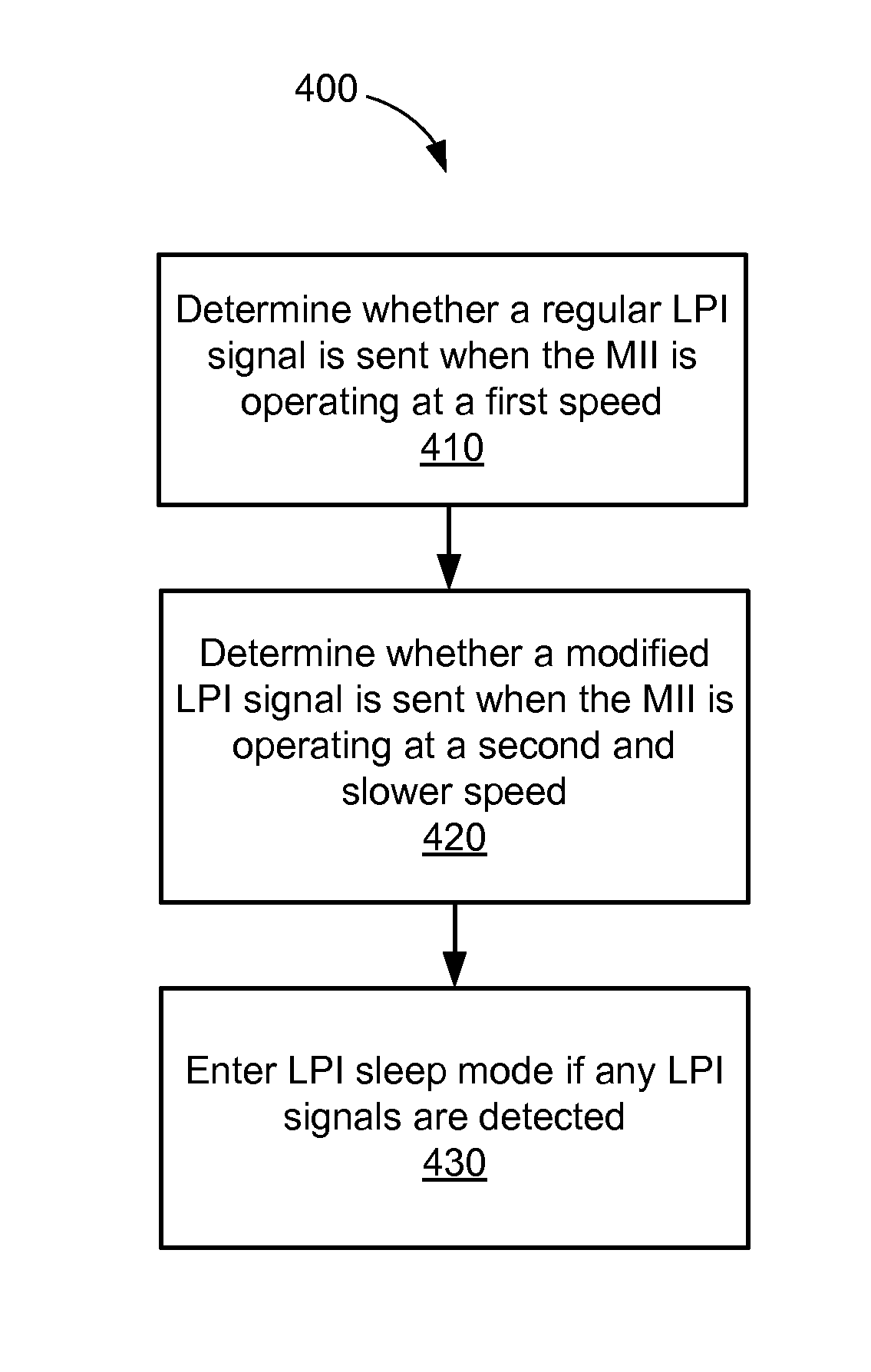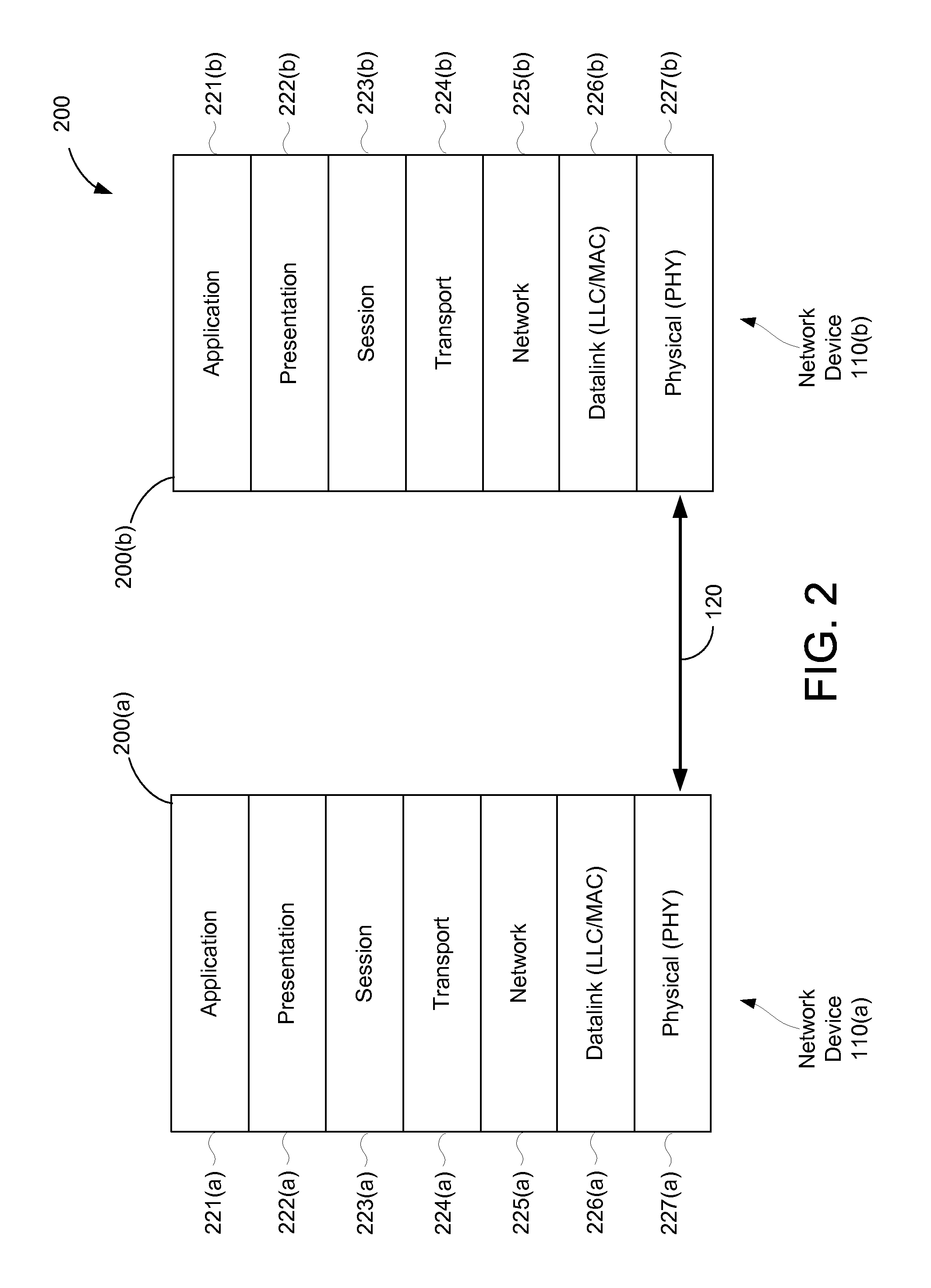Low power idle signaling for gigabit media independent interfaces operating in legacy modes
a legacy mode and idle signal technology, applied in the field of ethernet communication systems, can solve the problems of power consumption, the lpi signal designed to trigger sleep mode for high-speed transceivers (e.g., capable of 1 gbit/s) may not work properly when such transceivers are operating
- Summary
- Abstract
- Description
- Claims
- Application Information
AI Technical Summary
Benefits of technology
Problems solved by technology
Method used
Image
Examples
Embodiment Construction
[0012]A method and apparatus for enabling low power idle (LPI) signaling for Ethernet transceivers operating in legacy modes are disclosed that allow a high speed transceiver to retain energy efficient Ethernet (EEE) functionality even when the transceiver is operating in a slower speed mode. In some embodiments, an Ethernet device may enter an LPI mode upon receiving a regular LPI signal when its media independent interface (MII) is operating at a first transmission rate, and may enter the LPI mode upon receiving a modified LPI signal when the MII is operating at a second and slower transmission rate.
[0013]In the following description, numerous specific details are set forth such as examples of specific components, circuits, and processes to provide a thorough understanding of the present disclosure. Also, in the following description and for purposes of explanation, specific nomenclature is set forth to provide a thorough understanding of the present embodiments. However, it will ...
PUM
 Login to View More
Login to View More Abstract
Description
Claims
Application Information
 Login to View More
Login to View More - R&D
- Intellectual Property
- Life Sciences
- Materials
- Tech Scout
- Unparalleled Data Quality
- Higher Quality Content
- 60% Fewer Hallucinations
Browse by: Latest US Patents, China's latest patents, Technical Efficacy Thesaurus, Application Domain, Technology Topic, Popular Technical Reports.
© 2025 PatSnap. All rights reserved.Legal|Privacy policy|Modern Slavery Act Transparency Statement|Sitemap|About US| Contact US: help@patsnap.com



